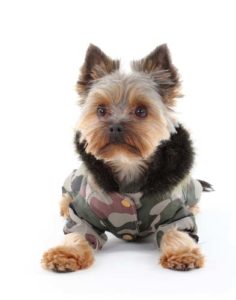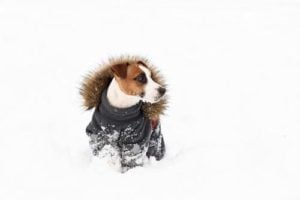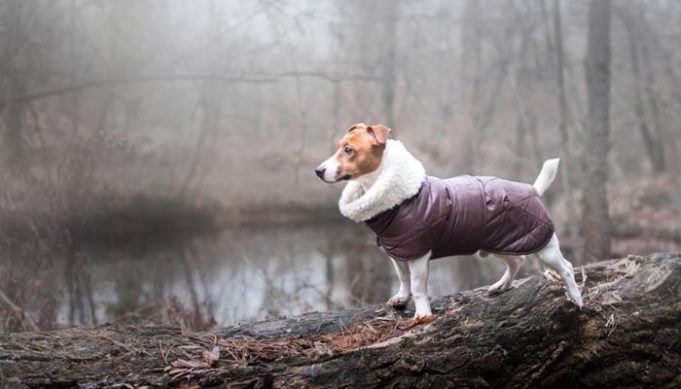If you live in an area with cold winters, then you might worry that your dog will be feeling cold when you take him out for a walk in low temperatures. For this reason, a variety of winter dog clothes have been gaining more popularity every year among pet owners.
Unless you have a dog breed that is perfectly suited for cold weather, like Siberian Husky, Alaskan Malamute or some other large breed with thick and long fur, a dog getting cold is a perfectly reasonable concern and you might wonder what can you do to make your pupper more comfortable. Dog winter coats especially are often considered a good solution, but just how effective are they?
Does Your Dog Need Winter Clothes?
 Before you make a decision to buy a dog winter coat for your pooch, you should think whether that is actually necessary.
Before you make a decision to buy a dog winter coat for your pooch, you should think whether that is actually necessary.
If you have a short-haired breed or a dog with medical condition that is a good choice. The same goes for puppies and senior dogs since they don’t do well in the cold in general. Your dog’s size is another good indicator of his ability to withstand cold, although it doesn’t always have to be, as is the case with Pit Bulls, for example.
Dogs that get plenty of exercise should not have a problem with cold weather but they may benefit from special jackets or coats that cover some body parts, like penis and testicles. If your dog is not in the best shape, he will probably be cold and could use a winter coat.
Owners with breeds that are well equipped for winter temperatures should avoid dressing them in winter clothes because that can lead to overheating. At the very least, those dogs would be very uncomfortable.
How Effective Dog Winter Coats Actually Are?
Many people wonder just how effective the winter coats are and whether they truly help their pets stay warm. The short answer is yes, they do help keep the pets warm.
 Of course, just how effective dog winter coats are will depend on many factors. First and foremost, it depends on the quality of the coat. There are plenty of different options out there and some are simply better than the others.
Of course, just how effective dog winter coats are will depend on many factors. First and foremost, it depends on the quality of the coat. There are plenty of different options out there and some are simply better than the others.
Another thing to consider is your dog’s willingness to wear winter apparel. Some dogs are just uncomfortable and refuse to wear winter coats. It could take a while to get your dog to wear winter clothes. Try to put the coat on your dog for a few minutes in the house every day to try to get him used to it, but if he doesn’t respond don’t try to force him.
Some people choose heavier coats because they believe that is the best option to keep their pets as warm as possible. However, heavier doesn’t always mean better and if the coat is too warm it can make your dog overheat.
When you choose a coat for your dog, go with a coat that doesn’t have any hanging parts like zippers or snaps which can irritate your pooch. Measure your dog properly before you choose a coat. If you don’t measure him right he can be uncomfortable in the coat or have mobility issues.
 If your dog is wearing a winter coat, that can make it difficult to him to get out of water if he happens to fall through the ice, so avoid any situations where this can happen.
If your dog is wearing a winter coat, that can make it difficult to him to get out of water if he happens to fall through the ice, so avoid any situations where this can happen.
Dog winter coats, jackets and sweaters can be very helpful if your pup requires something to keep him warm in the winter. They can keep him warm and cozy but you should still limit the time you spend outdoors with your dog in the winter. Measure your pooch the right way and choose a coat that will suit him well to make sure that your dog is both warm and comfortable.
READ NEXT: When Is It Too Cold for Dogs to Be Outside?













